| The Rare Triple Conjunction of 2020 |
by Gary P. Caton
For almost the entire year of 2020, Jupiter, Saturn and Pluto are all within about ten degrees of each other in Sagittarius/Capricorn. This means that if you extend your fist to arm’s length against the sky, it will cover all three planets. Perusing the historical records, I can find only one other instance where these three planets came together this closely and it happened to be in this same part of the sky.
One theme emerges from the four alignments of these three that occured over the last century. In my opinion, I found a theme centered around the beginnings of political dynasties. For instance, the last time these three came together this closely (which also happened to be in front of Sagittarius and Capricorn) was the year 1285, which was during the lifetime of Osman I, the first Ottoman Sultan and founder of the Ottoman Empire, which lasted into the 20th Century.
The next time Jupiter, Saturn and Pluto came together was in 1444, though only within about 16 degrees, in front of the constellation Gemini. A pair of twins, Cosimo and Damian de Medici were named after Saints Cosmas and Damian, two early Christian martyrs. By 1444, Cosimo de Medici’s power over Florence, Italy, was such that he was able to build the first public library. As historian Edward Gibbon put it: “[Cosimo was] the father of a line of princes, whose name and age are almost synonymous with the restoration of learning.” The Medici dynasty’s patronage of the arts is still seen the foundation to the Renaissance Era and extended to Galileo’s time (1564-1642).
The next time Jupiter, Saturn and Pluto conjoined was in 1583, again only within about 16 degrees, this time in front of the constellations Aquarius and Pisces. This was an important time in the founding of the British Empire, the largest empire in history. In 1583, Humphrey Gilbert claimed Newfoundland for England and a year later the first British colony was founded in North America on Roanoke Island in North Carolina.
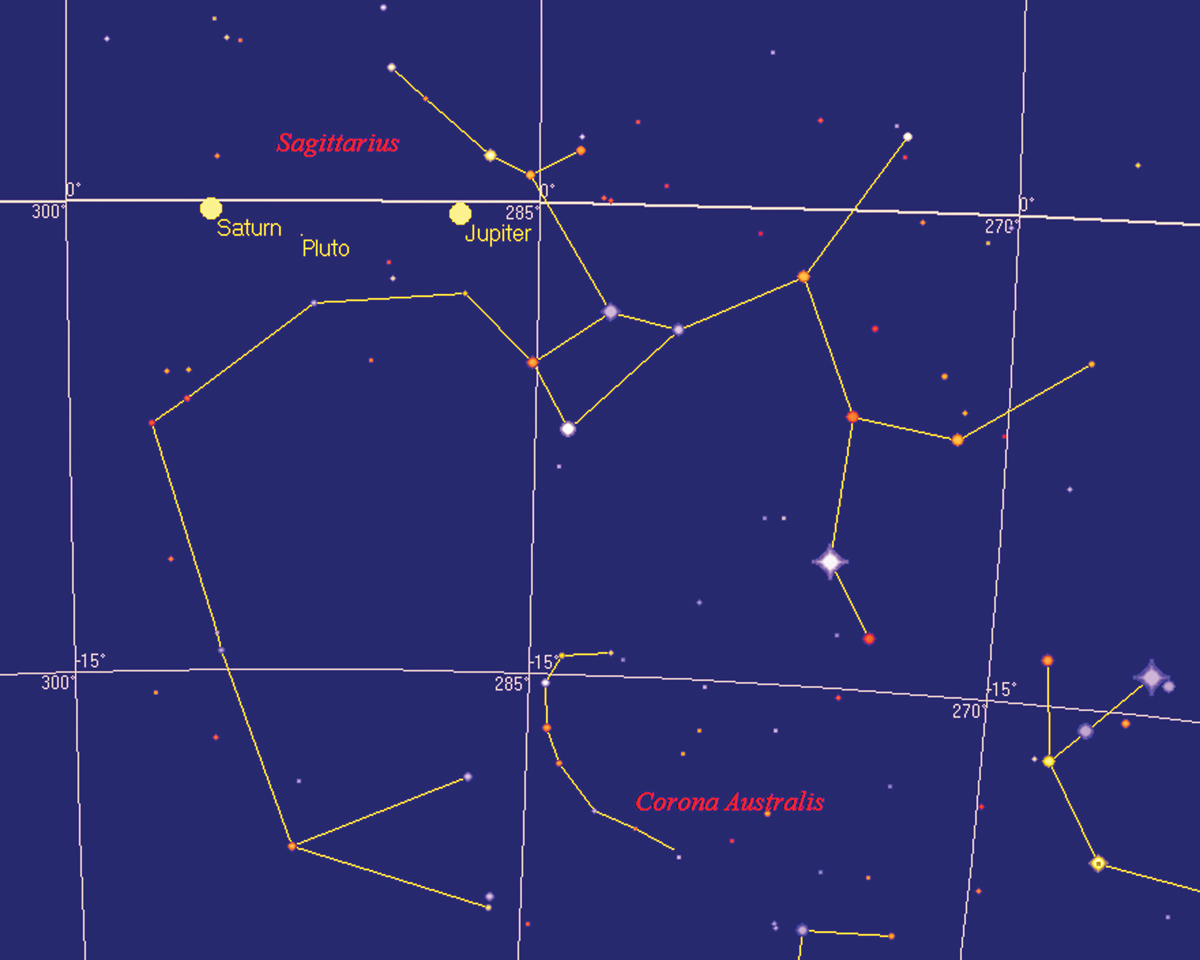 The last time these planets came together was recent and close. In 1980, Jupiter, Saturn and Pluto were within about 10 degrees of each other and they were in front of the constellation Virgo. Because of this recurring pattern of the founding of political dynasties during these particular triple conjunctions, it could be that some of the events of this time take on more importance than we might otherwise attribute. During that same year, Tim Berners Lee wrote the software project ENQUIRE, a predecessor to the World Wide Web, which he went on to found ten years later. The subsequent explosion of the Information Technology sector and the ability to store, manipulate and mine data have greatly transformed the world and this technological boom has ramifications in many other facets of society. The last time these planets came together was recent and close. In 1980, Jupiter, Saturn and Pluto were within about 10 degrees of each other and they were in front of the constellation Virgo. Because of this recurring pattern of the founding of political dynasties during these particular triple conjunctions, it could be that some of the events of this time take on more importance than we might otherwise attribute. During that same year, Tim Berners Lee wrote the software project ENQUIRE, a predecessor to the World Wide Web, which he went on to found ten years later. The subsequent explosion of the Information Technology sector and the ability to store, manipulate and mine data have greatly transformed the world and this technological boom has ramifications in many other facets of society.
So, how can we apply this knowledge of historical trends to the work of a biodynamic farmer? It seems to me that stewardship of the land can and perhaps should be remembered as the first and most important kind of dynasty. Wasn’t this always the traditional view? The only dynasty most of us will ever belong to is that of family and the land that sustains it. Perhaps we can begin to fashion legal structures similar to land trusts or conservancies that keep family farms from being preyed upon by larger corporate interests. I see this happening in my local area where the re-routing of the Appalachian Trail in the 1950’s led to the formation of the Southern Appalachians Highlands Conservancy in 1974 and from there the establishment of a Farmlands Conservation Program in 2005. I have to imagine that this is going on elsewhere as well, and that we can ramp up these activities this year to take advantage of these cosmic energies.
Another idea that seems to go along with the founding of dynasties is as simple as tree planting. A recent article in the journal Science argues that “restoration of trees remains among the most effective strategies for climate change mitigation.” The authors estimate that Earth’s ecosystems can support about a billion additional hectares of forest and that this can cut the atmospheric carbon by 25%. Armed with this information, farmers might initiate programs to re-plant forests on their land and hold workshops to invite the community to participate in purchasing and planting young trees. How many people will welcome an opportunity to feel like they’ve made their own personal contribution to a dynasty that can actually help heal the planet? And the relationships formed in this way can also sustain us. People will come out yearly or quarterly to visit their own personal tree in a restored forest. There can be family groves where people come to picnic or camp.
By reestablishing these stewardship tasks, we will leave a dynasty of healing the relationship between humans and nature, which can extend to all aspects of the planet.
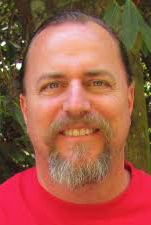 Gary P. Caton - Astronomer, Writer, Forecaster Gary P. Caton - Astronomer, Writer, Forecaster
Growing up in a rural setting outside Leesburg, Virginia, Gary developed passions for gardening and farming early in life and has lived on working farms.
In 1993 Gary was initiated into the planetary mysteries by seeing alignments in a dream. His deep love of nature fuels his enthusiasm for stargazing and astrophotography. Gary claims it has been a true joy combining his lifelong passion for learning with the tasks of completing the calculations and contributing to the forecasts for this calendar. Based on more than two decades of experience, he incorporates several new elements into this text, including consideration of the sextile aspect and a look at the deeper mysteries of the retrograde loops of Venus and Mars.
www.dreamastrologer.com
|
|
|
| An Astronomically Unusual Year |
by Gary P Caton
Despite the attention they often receive in the popular media, planetary retrogrades are relatively unusual. The Sun and Moon are never retrograde. Venus and Mars are retrograde less than 10% of the time; Mercury is retrograde less than 20%; Jupiter and Saturn are only retrograde roughly one third of the time. This means that direct motion accounts for approximately 86% of all motion for the seven visible planets. Put more simply, this means that on average, at any given moment, we should expect only one of the seven classical planets to be retrograde.
However in 2020, there are only two months–February and March–which fit the average of one of the classical planets being retrograde. For six months of the year, we will have at least two planets retrograde at the same time, and during June, there will be one week where four of the five classical planets are retrograde simultaneously. This is quite unusual, and only made possible by the fact that we have an unusual conjunction of Jupiter and Saturn–which only happens every twenty years.
In addition to having more than just the above average number of retrogrades, this year is even more unusual in that all of the classical planets cross the ecliptic plane. It is not unusual for planets closer to Earth to do so, in fact on average Mercury crosses the ecliptic about eight times each year, Venus about three and Mars once. Jupiter and Saturn only cross the ecliptic twice in their cycle, so this means every six and 14 years, respectively. It’s only at longer intervals of 30 and 60 years that Jupiter and Saturn cross the ecliptic within a year of each other. The last time all the classical planets crossed the ecliptic within a year was in 1990 and before that in 1960-61.
Even the casual history buff will note that those years contained a relatively high number of historically important events. In 1960, we saw 17 African nations gain independence and the civil rights movement gained steam in the United States. In early 1961, Eisenhower severed relations with Cuba and warned the public of the dangers of the military industrial complex. Months later, the Cold War became entrenched as Kennedy approved the CIA invasion of Cuba, known as the Bay of Pigs. Thirty years later, in 1990, Cold War relations were moving in the opposite direction, with the re-unification of Germany, the independence of the Baltic states and the breakup of Yugoslavia. Another major development in 1990 was the first web server and the foundation for the World Wide Web.
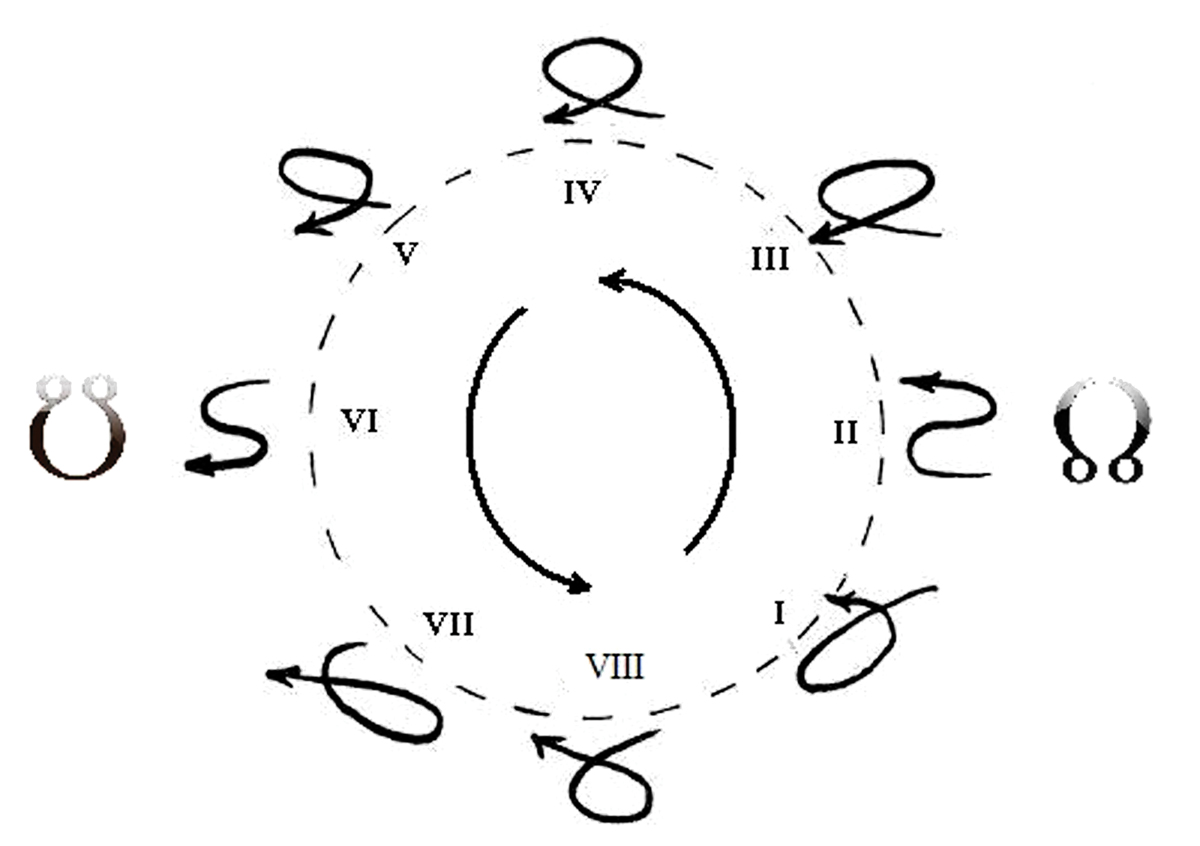 Looking closer, we can see these two astronomical phenomena are related. When planets are retrograde, they are at their closest approach to Earth. And retrograde motion is not a simple matter of moving backward. Before and after the retrograde, planets actually perform wide looping forays from the ecliptic. There are eight basic shapes these loops assume (see diagram), depending on the relationship between the location of the particular retrograde and the location of the planet’s nodes, namely the points where their path crosses the Sun’s path. Looking closer, we can see these two astronomical phenomena are related. When planets are retrograde, they are at their closest approach to Earth. And retrograde motion is not a simple matter of moving backward. Before and after the retrograde, planets actually perform wide looping forays from the ecliptic. There are eight basic shapes these loops assume (see diagram), depending on the relationship between the location of the particular retrograde and the location of the planet’s nodes, namely the points where their path crosses the Sun’s path.
Because of the different shapes, there are at least eight different types of retrogrades. They vary in shape, more so with the planets closest to Earth. During their retrogrades, Venus, Mercury and Mars come closer to Earth than the Sun, thereby penetrating the interior heart space of our system. Their retrogrades are more extreme as each planet moves farther away from the ecliptic, which makes their loop shapes more exaggerated. Venus, Mercury and Mars usually cross the ecliptic a couple times during their retrograde loops. However, when they are near their nodes, they cross the ecliptic only once in a “Z” shaped loop.
On the other hand, Jupiter and Saturn are retrograde more frequently, about a third of the time, but their loops shapes are more flattened and less extreme. Also, Jupiter and Saturn cross the ecliptic in the two “Z” shaped loops near their nodes. As mentioned earlier, the last times both these planets performed “Z” shaped loops where they crossed the ecliptic were in 1990 and 1960-61. The reason we can so easily see an increase in the socio-political activity is that the ecliptic is basically the orbit of the Earth around the Sun. So, planets directly on the ecliptic are at the points where they most directly influence the Earth plane. Thus, we can easily see both the unifying powers of Jupiter and the separating powers of Saturn at work during these years.
What’s really incredible is that, in fact, all five planets perform “Z” shaped loops this year! Jupiter and Saturn cross the ecliptic near their South Nodes in February. Then Venus does a South Node dance in June. After this, it is Mercury’s turn, and it crosses the ecliptic in a “Z” loop near it’s North Node in October. Not to be out-done, Mars crosses the ecliptic in an upward “Z” near it’s North Node in December. This is something that did not happen in either 1990 or 1960-61, which makes 2020 a very unusual astronomical year indeed!
Recommended Reading
Gregory Rozek, “Retrograde Planets and their Number in the Natal Chart.” Accessed online 9/11/16 http://gregoryrozek.com/en/retrogradeplanets/. First appeared as “People with Many Retrogrades” in The Astrological Journal, published by the Astrological Society of Great Britain, March 2014.
 Gary P. Caton - Astronomer, Writer, Forecaster Gary P. Caton - Astronomer, Writer, Forecaster
Growing up in a rural setting outside Leesburg, Virginia, Gary developed passions for gardening and farming early in life and has lived on working farms.
In 1993 Gary was initiated into the planetary mysteries by seeing alignments in a dream. His deep love of nature fuels his enthusiasm for stargazing and astrophotography. Gary claims it has been a true joy combining his lifelong passion for learning with the tasks of completing the calculations and contributing to the forecasts for this calendar. Based on more than two decades of experience, he incorporates several new elements into this text, including consideration of the sextile aspect and a look at the deeper mysteries of the retrograde loops of Venus and Mars.
www.dreamastrologer.com
|
|
|
| Insights into Fifth Generation (5G) Radiofrequency Radiation |
By Meg Sears
Beyond the rainbow is an invisible spectrum of waves. Innumerable inventions in today’s electrified world are exposing the entire biosphere to an increasing glare of novel “light.”
Most spectacular is radiofrequency radiation or RFR–the eletromagnetic signals used in wireless communication. This range of radiofrequency is poised to fuel the fifth generation or 5G broadband. Coming soon, we will have an Orwellian vision of what is now termed the Internet of Things, transmitting data via wireless signals from and to tens or hundreds of billions of devices. Information about everything from social media, email and phone calls, shopping, banking, building controls and security, to the state of your baby’s diaper or supplies in your refrigerator will all be at your fingertips. If done wirelessly, this could swamp our world in an unprecedented intensity of RFR.
All life on this planet evolved with certain electromagnetic radiation (EMR), such as visible light, but the Earth’s atmosphere provides natural protection from cosmic-sourced radiation. The 20th Century brought electrification and lower frequency EMR. By mid-century higher frequencies were introduced and used in radar, military and emergency response radio communications, and radio and television broadcasting. These signals have wavelengths long enough to travel through the earth and buildings.
Communication rapidly advanced from dots and dashes, to radio with music and news. Then during the 1960s, black and white television advanced to colour TV. Broadcasts were transmitted using radiofrequency radiation in the lower frequency bands, that traversed great distances. Everyone listened or watched programs at the same time.
Early wireless communication connected ham radio operators, drivers in vehicles via citizen band, and the 1970s brought the first cellular phone. The size of a brick, it cost thousands of dollars and had battery power for a half-hour conversation.
Fast forward: today’s devices are smaller, lighter and faster, with longer-lasting batteries and many capabilities. Successive generations brought about the smart phone with its texting, Wi-Fi, Internet, live streaming, and full business integration. The fifth generation, 5G, is marketed to reach into all details of our lives, connecting everything with the “Internet of Things.”
Within this current generation, humans have increased their use of radiofrequency radiation exponentially. We no longer gather around the television set at a designated time. Instead, we stream on demand. From 2016 to 2017, the number of mobile phones in Canada increased 3%, mobile data increased 30% but television viewing diminished substantially. A program that was previously broadcast a few times is now being transmitted thousands or millions of times, to single-user screens. A substantial portion of that transmission is broadcast wirelessly.
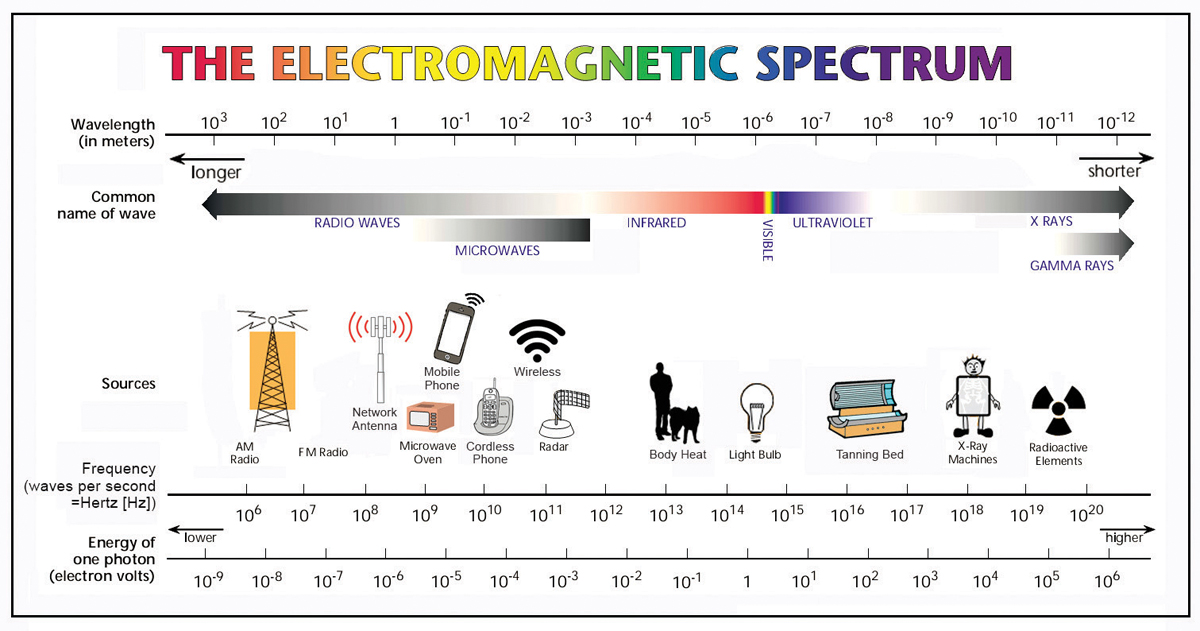
To keep up with this demand for more data and higher speeds, 3G and 4G wireless are being used more intensively and 5G will expand to higher frequencies with millimeter scale wavelengths. Along with tens of thousands of satellites hovering above the earth and large antennae on towers, small cell intensive antennae are being densely deployed along streets in certain cities, closer to users.
This ever-increasing electronic noise is biologically harmful and degrades the quality of transmissions along telephone wires. The RFR also disrupts the finely-tuned biochemistry of life, damages cells, causes dysfunction and cancer, impairs development and can lead to chronic ill health with ongoing exposure. Some people develop electromagnetic hypersensitivity.
Radiofrequency radiation impacts all life forms. Most obviously, trees close to cell towers suffer damage on the side closest to the tower, then die prematurely. When the wavelength matches the size of small creatures such as insects, as will happen with millimetre waves, the likely result will be substantial damage and death.
Magnetite, found in microbes, insects, mollusks, fish, birds and mammals, is a mineral that allows organisms to detect magnetic fields. Birds and insects, with magnetite above their beaks and in their abdomens, get lost when exposed to radiofrequency radiation. Birds get disoriented in cities, and bees don’t return to hives. We don’t know the role of magnetite in human brains, but this mineral may be partially implicated in damage associated with RFR emitted by cell phones.
In 2011, the World Health Organization’s International Agency for Research on Cancer or IARC, convened a panel of experts who concluded that RFR possibly causes cancer in humans (Group 2B). Since then, the particular types of tumours associated with cell phones are increasing in young adults, and cases are reported of breast cancer where cell phones were carried in bras. Further analysis of human data and three new, large animal studies, lead experts to conclude that RFR definitely causes cancer. If a similar expert panel were convened today, it would most probably conclude that RFR is a known human carcinogen (Group 1, which includes tobacco smoke and asbestos). RFR is a high priority for re-evaluation in the IARC 2020-2024 workplan.
Cancer is the long-term culmination of cellular damage, inflammation and the breakdown of protective mechanisms in the body. Other contributors include adverse chemical exposures, poor diet and stressors, but the fact that radiofrequency radiation is biologically active and causes harm is now beyond debate.
It may be hard to disentangle effects of radiofrequency radiation from those of screen time and lifestyle in people, yet animal studies demonstrate damage in the brain and organs, and impairment (e.g., memory and balance) in animals exposed to RFR early in life.
If a human foetus is exposed to higher levels of RFR, the child is more likely to exhibit poor behaviour and learning.
The Canadian Paediatric Society (CPS) recommends limited the use of wireless devices to address the effects of screen time on social interactions. Children fare better with undistracted attention from parents and other caregivers when they do not have to compete with electronics. Unlike measures in some European, American and other jurisdictions (e.g., Cyprus) to limit children’s exposure, the CPS does not yet mention harmful effects of RFR, nor advise minimizing exposure.
Schools that were early adopters of the Internet installed cable and wired connections, but those have largely been abandoned in favour of Wi-Fi. Following the introduction of Wi-Fi, some students and teachers began experiencing excruciating headaches, cardiac arrhythmia and other adverse effects. There is no evidence that educational outcomes improved with wireless connectivity.
Radiofrequency radiation impairs male fertility, as sperm quantity and vitality are reduced when cell phones are in pockets and laptops on laps. Some fertility clinics query the use of wireless devices.
The Electromagnetic Spectrum
Beyond the fringes of the colours of visible light, at lower frequency we feel the heat of infrared radiation. Beyond vibrant red through yellow and blue to violet, are higher frequency ultraviolet, then x-rays and gamma rays.
 Light–indeed, all electromagnetic radiation (EMR)–behaves both as a wave and as a particle, called the “wave-particle duality.” Electromagnetic radiation travels like a wave at the speed of light, so higher frequencies have shorter wavelengths. Light–indeed, all electromagnetic radiation (EMR)–behaves both as a wave and as a particle, called the “wave-particle duality.” Electromagnetic radiation travels like a wave at the speed of light, so higher frequencies have shorter wavelengths.
Electromagnetic radiation also behaves as particles called photons. A single photon of high-frequency ionizing radiation, such as X-rays and gamma rays, can remove an electron from an atom, creating a charged atom called an ion. The first recognized hazard of radiation, such as X-rays, was burns, but even low doses of ionizing radiation harms cells, and DNA damage leads eventually to cancer.
(continued on next page)
This powerful radiation is now carefully engineered for medical and scientific applications.
At the far end of the scale, the extremely low frequency Schumann Resonances, starting at 8 cycles per second or Hertz (Hz) and higher, have a wavelength approximately the circumference of the Earth or a fraction (half, third, etc.). See diagram above. This is resonance of EMF pulses from lightning channelled beneath the ionosphere high in the atmosphere.
Tips to reduce your exposure to radiofrequency radiation
• Wireless transmissions should not be the standard. Fibre-optic cable is more secure, reliable and resilient, requires less energy to transmit signals and results in no RFR. Demand and install wired infrastructure whenever and wherever possible.
• Distance is your friend with wireless devices. Keep phones, tablets, etc. away from your head and body, and off your lap.
• Use text messaging instead of voice calls whenever possible.
• Make only short or essential calls on cell phones, using speaker phone or an air tube headset.
• Power off phones and personal digital devices, or set on airplaine mode. Turn off Wi-Fi, Bluetooth, Mobile Data, Mobile Hotspot and Location.
• Avoid charging phones and devices near beds.
• Use corded (not cordless) home phones, wired (not wireless) whenever possible, especially for lengthy conversations.
• Pre-download videos and music rather than streaming.
• Minimize the number of apps running on wireless devices.
• Choose wired Internet connections over wireless systems.
• If Wi-Fi cannot be eliminated, put the Wi-Fi router on a timer to turn off when not needed (especially while sleeping).
For additional articles on radiocommunication, go to
www.PreventCancerNow.ca and www.earthhavenlearning.ca
|
|
|
| A Gardener’s Perspective on Biodiversity |
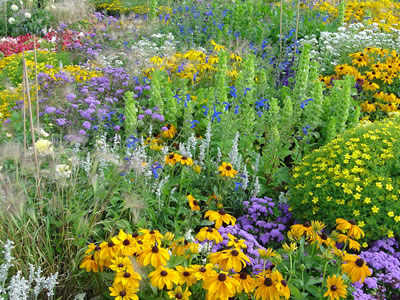 by Peter Fuller by Peter Fuller
When I first moved to the three acres which would eventually become my native plant nursery, it was not much more than a farm field that had been ignored for many years. Wet spots made planting and harvesting awkward. Although there were plants, birds and insects, I felt that this land lacked something that I had difficulty putting into words. I enjoy detail and complexity for their own sake, but the field felt impoverished because it was not very productive in terms of agricultural food production. The entire network of organisms had been depleted and suppressed.
Over the next several years, I planted hundreds of trees, created seasonal ponds in the wet areas, introduced an area of granite boulders taken from old fence rows to build a rock garden, planted a naturalized buffer zone between the nursery and nearby farm fields, made compost and filled beds with native perennials, grasses and shrubs. I grew as many things as possible from local seed sources.
Changes occurred faster than I had anticipated. I remember one day when I noticed that there seemed to be a great number of many species of dragonflies flying around, and the ponds were surrounded by plants that had naturally seeded themselves. Other obvious newcomers were frogs in the ponds, turtles on the lawn, mallards nesting nearby, snakes in the rock garden, birds visiting during spring and fall migrations and butterflies in the gardens. The colorful perennials had all started to bloom. Year after year, the number and variety of organisms continued to expand. The land was experiencing a rapid growth in biodiversity.
Biodiversity encompases the variation among and within populations in an interconnected web of organisms. It includes not only the relationships easily seen among plants and animals but also those involving fungi, soil organisms and bacteria. And it pays special attention to the genetic diversity within a given population.
Why does biodiversity matter to a gardener? Besides the aesthetic considerations of varieties within a landscape, the very existence of life depends on biodiversity. Of greatest interest to gardeners is the idea that biodiversity provides balance and resilience.
In any complex network or system, the number of participants and the multiple paths they can follow to achieve what they need (for example, food, shelter, reproduction) provide checks and balances to the whole system so that extremes are avoided. High biodiversity provides this naturally balanced environment.
As an illustration of this, I am reminded of something that occured in my nursery. One day, I found several pots of Penstemon seedlings covered with aphids. Despite resolving to do something about this, I only returned several days later, as I was swamped by other tasks. The trays were in the nursery with hundreds of other species and accessible to all types of flying insects. When I examined the plants the second time, there were hoverfly larvae (Syrphidae) all over these leaves gobbling up the aphids, and when I finally had time to take action a few days after that, the apparent crisis was over and there was nothing for me to do. Growing the plants within a diversified environment had let the ecosystem balance the situation. This does not mean intervention is never required. Gardens by their very nature are somewhat artificial, but the more biodiverse a system is, the more ways there are for it to balance itself.
Changes to climate patterns are of special concern because they require adaptation by all organisms. Future conditions may be very different and unpredictable. Within any given population, genetic diversity means that certain individuals will be able to adapt better, so having a high degree of diversity at the outset means the web is more resilient in the long term.
The easiest way for gardeners to participate in increasing this resilience is to grow plants from seed and to grow those plants that interact in interdependent ways with soil organisms, insects, birds, and animals.
My special area of interest has been promoting the use of native plants in garden settings, since they are so well suited to fitting into the web of organisms in any given area. I limit the use of cultivars in my garden and I keep starting plants from seed, even when vegetative division (cutting or splitting) is easy, so that genetic diversity is constantly encouraged.
Whenever possible I use locally collected seeds. I have developed a network of neighbours with woodlots, fields and wetlands where I can collect seed to establish stock plants in the nursery’s gardens. I practise ethical seed collection by obtaining permission from property owners, and I never collect seed from rare or endangered plant populations and I only take a maximum of 10% of the existing seed. Collecting from different individuals provides genetic diversity among the next generation of plants.
Much of the seed from my local flora in eastern Ontario needs a cold/moist period to break seed dormancy. I sow seeds in sheltered places in pots that are sunk in the ground and mulched with leaves. I put most pots into plastic bags to retain moisture, but pots of shrub/tree seeds can attract rodents, so I use a covering of hardware cloth for these or place them in an unheated building. Pots in bags must not be in direct sunlight and the bags must be removed in the spring. The seeds can be placed in the fridge in damp vermiculite for a few months using resealable plastic bags.
My seed collecting starts in the spring as the woodland bursts into a frenzy of blooming before the canopy closes over. Most of these spring flowers (Trillium, Bloodroot, Hepatica, Wild Ginger, etc.) produce abundant seed but they are moist and cannot be allowed to dry out. I watch for pods and fruits starting to break open. I store the cleaned seeds immediately in damp vermiculite in resealable plastic bags in a dark place, such as a cool cupboard. Starting in November, I provide the seeds with a cold and moist period (outside during the winter in pots or a garden bed is best, but inside a fridge is an alternative).
Many of the meadow and wetland plants produce dry seed heads, which turn brown when ready and stay on the plant for some time. I clean and store these dry until I sow them in November. Fleshy fruits, such as those of elder, raspberries, dogwood, and viburnum, can be easily extracted by mashing the fruit inside a plastic bag and then washing the contents using a sieve. I do not allow nuts to dry out. I mix them with damp vermiculite and store the bags either in the fridge or in bins of leaves outside. I shake cones inside a tin to dislodge their seeds. Seeds seem to be everywhere in the autumn, and I spend a number of days collecting, cleaning, labeling and storing them. Frozen wetlands become accessible in the winter allowing for easy seed collection from sedges, wild iris and shrubs.
After a long winter, April is much anticipated. Seed bags come out of the fridge and their contents are sown in pots or in the ground. Inevitably some pots reveal no growth, but I keep them shaded and moist and wait to see if they will produce anything the following spring.
Propagation is one of the most satisfying experiences of gardening and always full of surprises. It may take a year or two to get to know the preferences of a particular species, but seed propagation produces an endless supply of garden plants and brings with it a deeper knowledge and appreciation of the local flora.
Increasing the biodiversity of the landscape around the nursery has greatly improved its productivity in so many ways, not just in terms of food for people. A balanced and resilient network of organisms allows nature to produce all the benefits of a healthy system: soils are fed and improved, matter and energy cycled and water cleaned. Living things in all their diverse forms flourish.
|
|
|
|
|


![]()

 The last time these planets came together was recent and close. In 1980, Jupiter, Saturn and Pluto were within about 10 degrees of each other and they were in front of the constellation Virgo. Because of this recurring pattern of the founding of political dynasties during these particular triple conjunctions, it could be that some of the events of this time take on more importance than we might otherwise attribute. During that same year, Tim Berners Lee wrote the software project ENQUIRE, a predecessor to the World Wide Web, which he went on to found ten years later. The subsequent explosion of the Information Technology sector and the ability to store, manipulate and mine data have greatly transformed the world and this technological boom has ramifications in many other facets of society.
The last time these planets came together was recent and close. In 1980, Jupiter, Saturn and Pluto were within about 10 degrees of each other and they were in front of the constellation Virgo. Because of this recurring pattern of the founding of political dynasties during these particular triple conjunctions, it could be that some of the events of this time take on more importance than we might otherwise attribute. During that same year, Tim Berners Lee wrote the software project ENQUIRE, a predecessor to the World Wide Web, which he went on to found ten years later. The subsequent explosion of the Information Technology sector and the ability to store, manipulate and mine data have greatly transformed the world and this technological boom has ramifications in many other facets of society.  Gary P. Caton - Astronomer, Writer, Forecaster
Gary P. Caton - Astronomer, Writer, Forecaster Looking closer, we can see these two astronomical phenomena are related. When planets are retrograde, they are at their closest approach to Earth. And retrograde motion is not a simple matter of moving backward. Before and after the retrograde, planets actually perform wide looping forays from the ecliptic. There are eight basic shapes these loops assume (see diagram), depending on the relationship between the location of the particular retrograde and the location of the planet’s nodes, namely the points where their path crosses the Sun’s path.
Looking closer, we can see these two astronomical phenomena are related. When planets are retrograde, they are at their closest approach to Earth. And retrograde motion is not a simple matter of moving backward. Before and after the retrograde, planets actually perform wide looping forays from the ecliptic. There are eight basic shapes these loops assume (see diagram), depending on the relationship between the location of the particular retrograde and the location of the planet’s nodes, namely the points where their path crosses the Sun’s path. 
 Light–indeed, all electromagnetic radiation (EMR)–behaves both as a wave and as a particle, called the “wave-particle duality.” Electromagnetic radiation travels like a wave at the speed of light, so higher frequencies have shorter wavelengths.
Light–indeed, all electromagnetic radiation (EMR)–behaves both as a wave and as a particle, called the “wave-particle duality.” Electromagnetic radiation travels like a wave at the speed of light, so higher frequencies have shorter wavelengths.  by Peter Fuller
by Peter Fuller